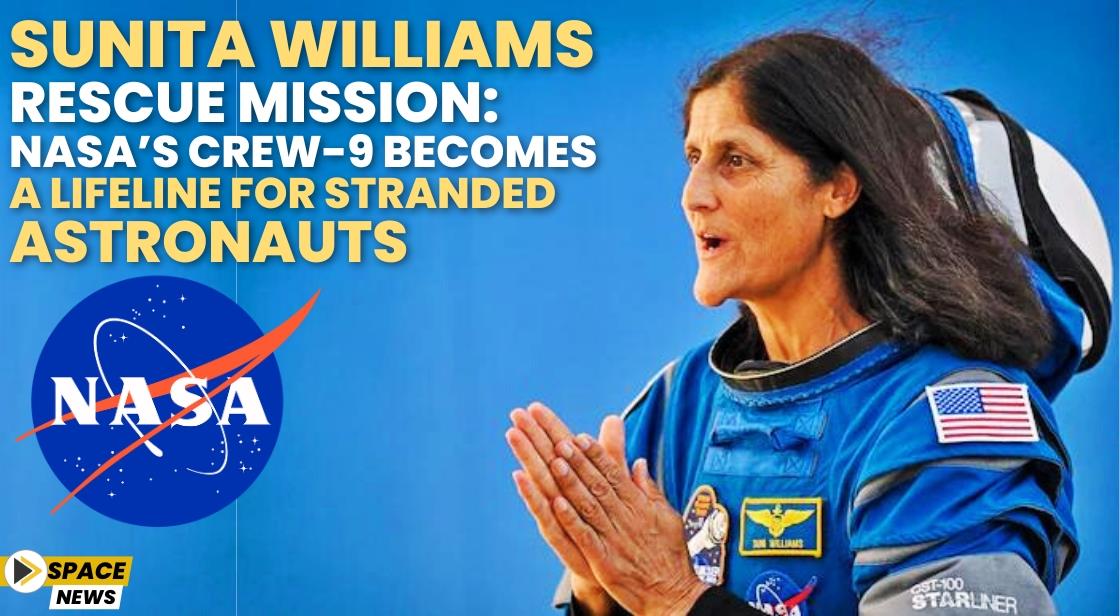Sunita Williams Rescue Mission: NASA’s Crew-9 Becomes a Lifeline for Stranded Astronauts

News Synopsis
This week marks the launch of a critical NASA mission, Crew-9, which has evolved into a lifeline for astronauts Sunita Williams and Butch Wilmore. Initially planned as a routine mission, Crew-9 now has the urgent task of rescuing the two astronauts, who have been stranded on the International Space Station (ISS) for nearly four months due to technical failures with Boeing’s Starliner spacecraft. NASA will be launching the SpaceX Crew-9 mission on Thursday, September 26, 2024, to bring the duo safely back to Earth.
Stranded on the ISS: The Sunita Williams and Butch Wilmore Ordeal
NASA astronauts Sunita Williams, one of the most seasoned spacefarers, and Butch Wilmore found themselves in an unexpected predicament after their launch aboard Boeing’s Starliner on June 5, 2024. The mission was initially intended to be Boeing's moment of triumph, proving Starliner’s capability to transport astronauts to and from the ISS as part of the spacecraft’s first crewed flight test. Originally scheduled to spend only around 10 days in space, the two astronauts have been in orbit for over four months.
Shortly after docking at the ISS, technical malfunctions began to emerge. Of Starliner’s 28 thrusters, five malfunctioned, and leaks were detected in the propulsion system’s helium tanks. The issue was serious, as the spacecraft needed its full capacity to ensure a safe re-entry into Earth’s atmosphere.
Over the ensuing weeks, NASA worked relentlessly to resolve the issues, with Williams and Wilmore conducting various thruster tests while the team on the ground diagnosed the problems. However, the risks were deemed too great, and NASA made the tough decision not to bring the astronauts back aboard the Starliner.
The Role of SpaceX Crew-9: A Rescue Mission
NASA’s immediate solution came through its collaboration with SpaceX. Originally planned as a routine crew rotation, the SpaceX Crew-9 mission has been repurposed as a rescue mission for Williams and Wilmore. The SpaceX Dragon capsule, part of the Crew-9 mission, will be the astronauts' ticket back to Earth, albeit later than initially planned, with their return now expected in February 2025.
The original Crew-9 lineup included NASA astronauts Zena Cardman and Stephanie Wilson. However, to accommodate the emergency situation, NASA reassigned both to future missions, making room for Williams and Wilmore’s return. Now, seasoned astronaut Nick Hague will lead the mission, joined by Russian cosmonaut Aleksandr Gorbunov, who will be making his first trip into space. The Crew-9 mission has taken on heightened importance, with the safety of Williams and Wilmore at the forefront.
Extended Time in Space: Comparisons to Past Missions
The situation with Williams and Wilmore is reminiscent of the extended mission of astronaut Frank Rubio in 2022. Rubio spent an unexpected 371 days in space after a coolant leak in his return vehicle delayed his mission. While Sunita Williams and Butch Wilmore's mission is shorter in comparison, they are spending far more time in space than originally planned. Despite being stranded, the astronauts have been continuing valuable scientific research and conducting maintenance on the ISS during their extended stay.
NASA Administrator Bill Nelson underscored the importance of safety in making the decision to leave Starliner unmanned for its return. "The decision to keep Butch and Suni aboard the ISS and return the Starliner uncrewed is a result of a commitment to safety," Nelson stated, alluding to lessons learned from NASA’s tragic past, including the Challenger and Columbia disasters.
A Historic Mission in More Ways Than One
Beyond its rescue mission role, Crew-9 is set to make history in its own right. This launch will be the first crewed mission from Space Launch Complex-40 (SLC-40) at Cape Canaveral Space Force Station in Florida. For SpaceX and NASA, this milestone marks an important step forward in their collaboration and advancement of space exploration capabilities.
Nick Hague, who will command the mission, brings invaluable experience, having already logged 203 days in space. Notably, Hague will also be the first active U.S. Space Force Guardian to launch into space, adding another significant milestone to the mission. His leadership will be crucial as Crew-9 assumes its rescue role, ensuring the safe return of Sunita Williams and Butch Wilmore.
With the rescue of the two astronauts now intertwined with Crew-9’s mission, the upcoming launch highlights the importance of adaptability and collaboration in space exploration. As NASA continues to refine its spacecraft technologies and safety protocols, missions like this demonstrate the evolving complexity and risks of human spaceflight.
You May Like









